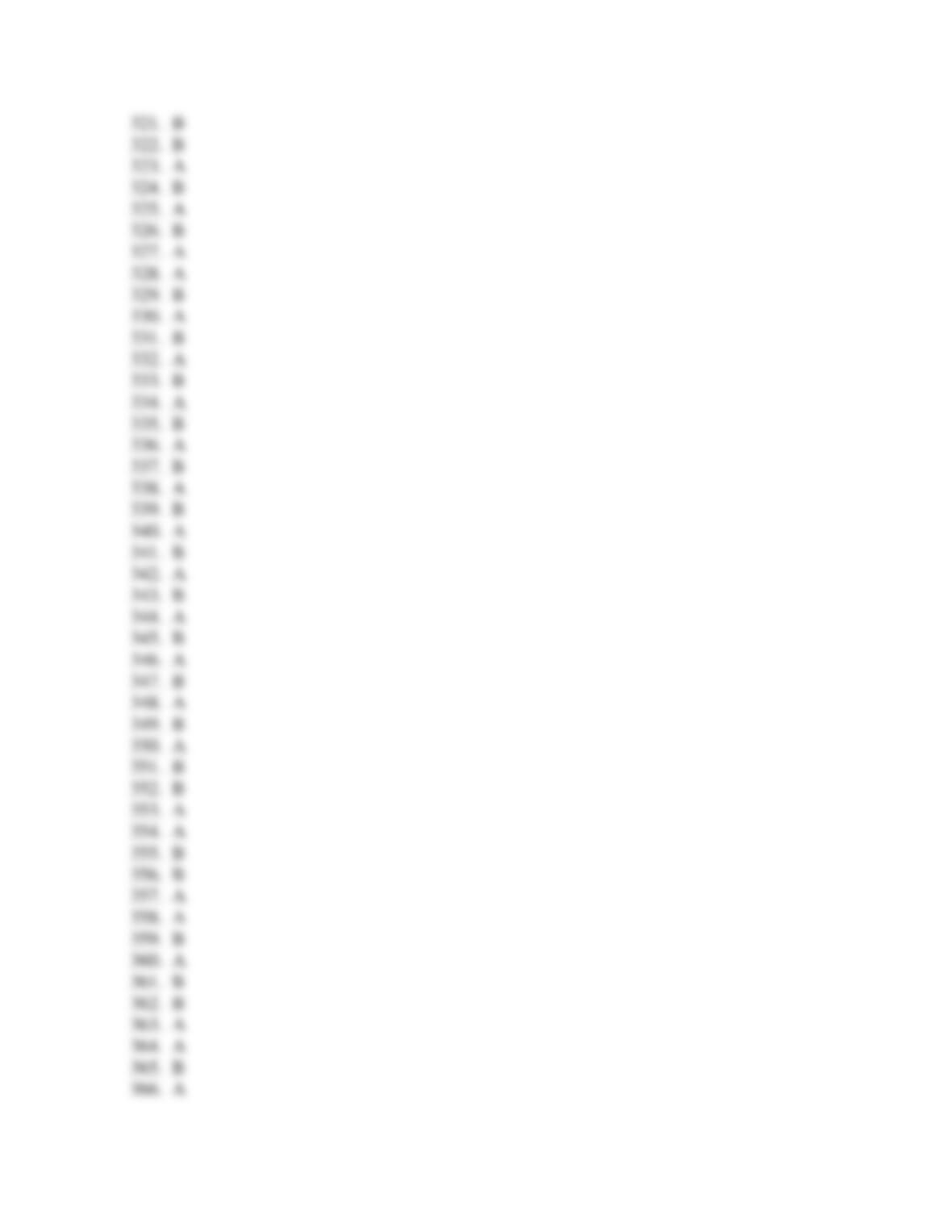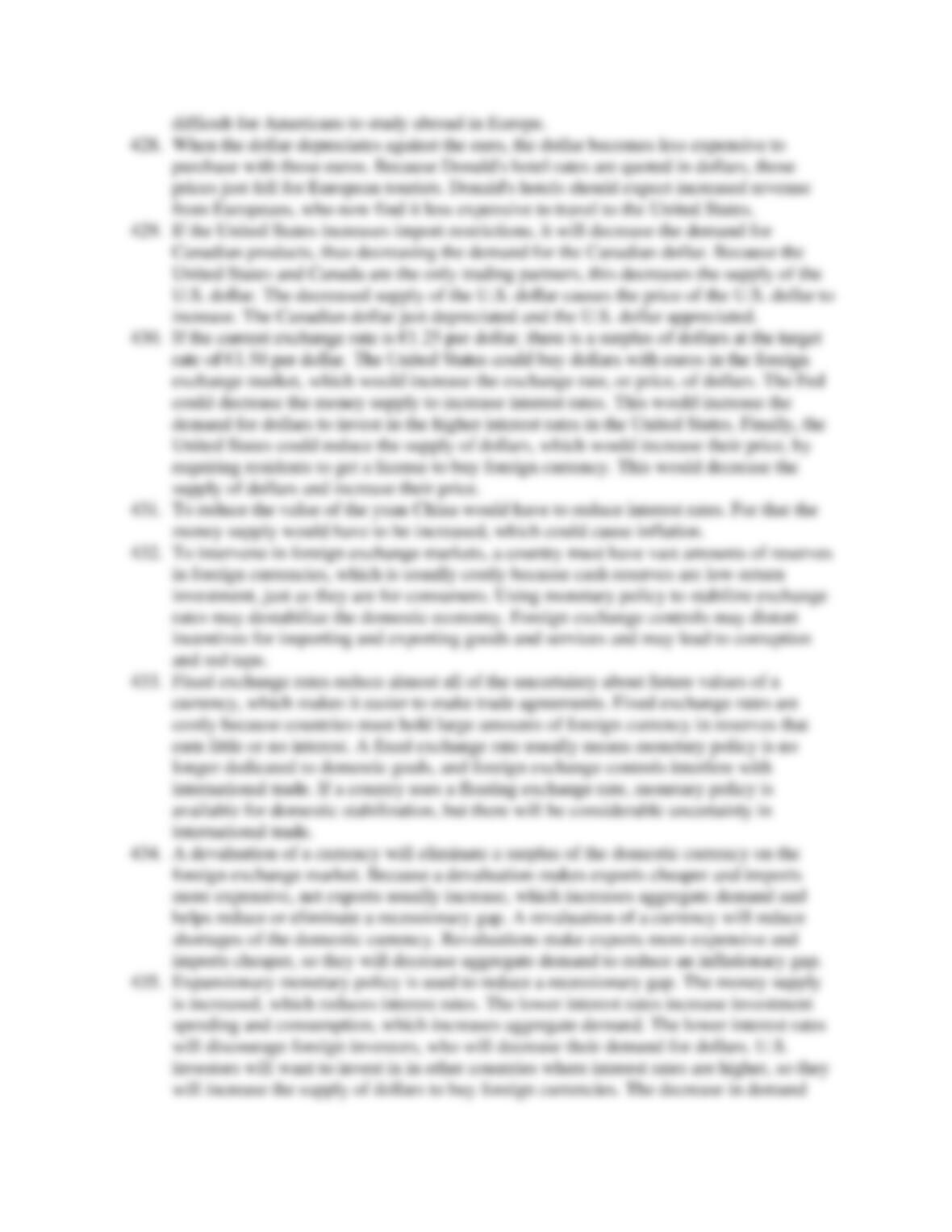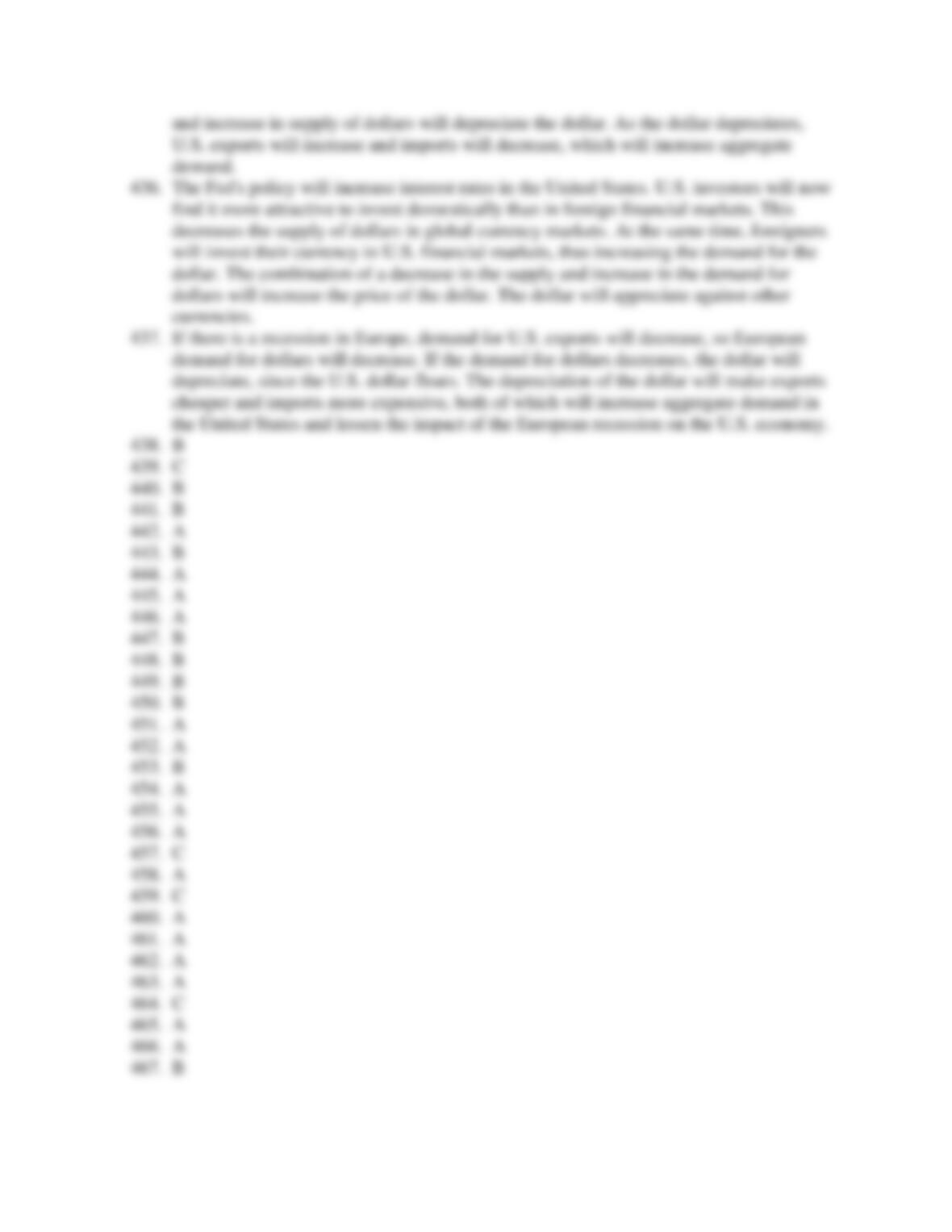When the U.S. dollar price of a foreign currency rises:
it becomes cheaper for foreigners to buy U.S. goods.
it becomes cheaper to buy foreign goods in the United States.
foreign goods go down in price.
we need fewer dollars to buy the foreign currency.
If the U.S. dollar appreciates, we expect all of the following EXCEPT that:
Americans will buy more foreign currency.
Americans will buy more goods from abroad.
U.S. exports to other countries will decline.
Americans will buy fewer goods from abroad.
Suppose that the United States and European Union are the only trading partners in the
world. If interest rates in the United States are significantly lower than those in the
European Union, we would expect:
the supply of the dollar to fall, appreciating the dollar.
the demand for the dollar to fall, depreciating the dollar.
the supply of euros to increase, depreciating the euro.
the demand for euros to decrease, depreciating the euro.
Suppose that the United States and European Union are the only trading partners in the
world. If the United States lowers import restrictions from the European Union, we
would expect:
the demand for euros to increase, appreciating the euro.
the demand for the dollar to increase, appreciating the dollar.
the supply of dollars to increase, appreciating the dollar.
the supply of euros to increase, depreciating the euro.
Suppose that the United States and European Union are the only trading partners in the
world. If the European Union imposes some import tariffs on U.S. goods, we would
expect:
the supply of the euro to decrease, depreciating the euro.
the demand for the dollar to decrease, depreciating the dollar.
the demand for the dollar to increase, appreciating the dollar.
the supply of the dollar to decrease, depreciating the dollar.























